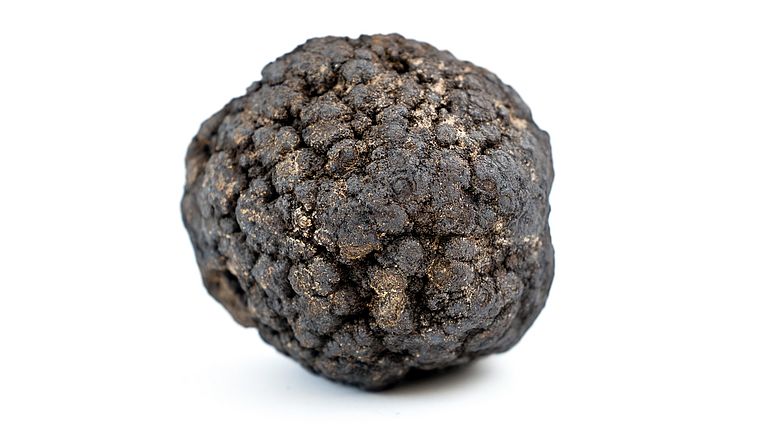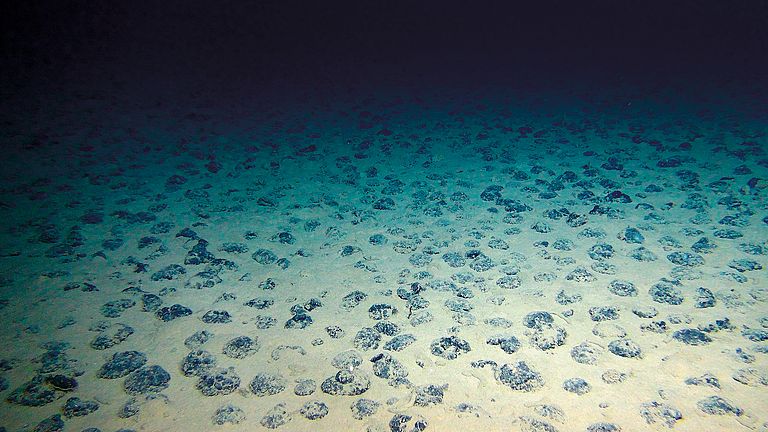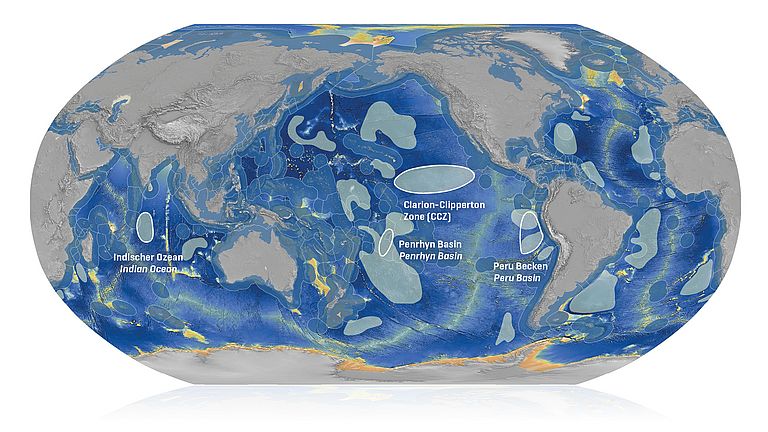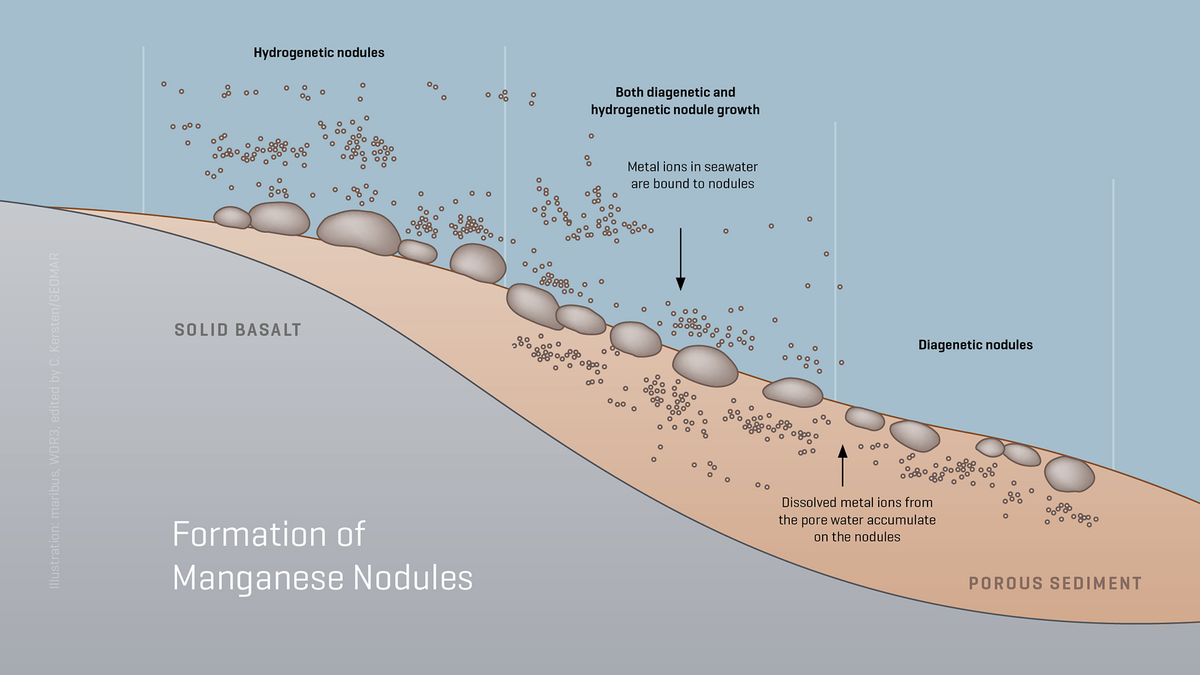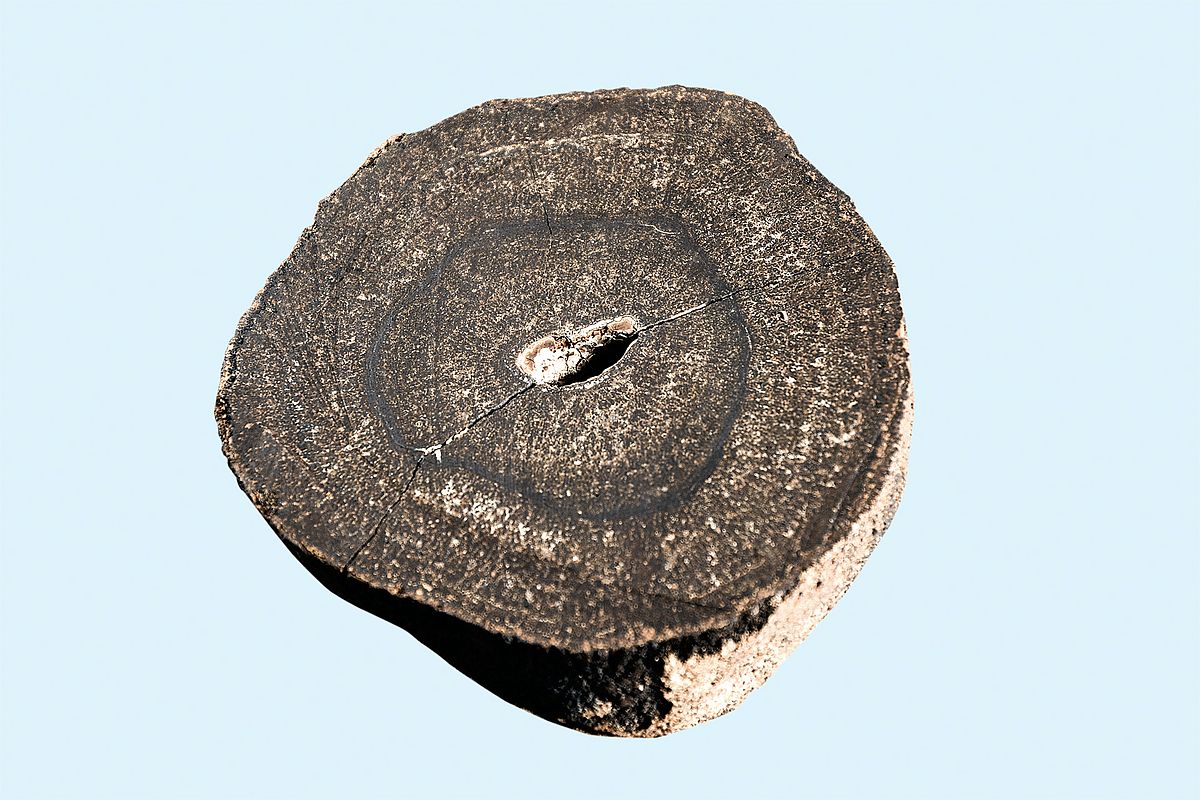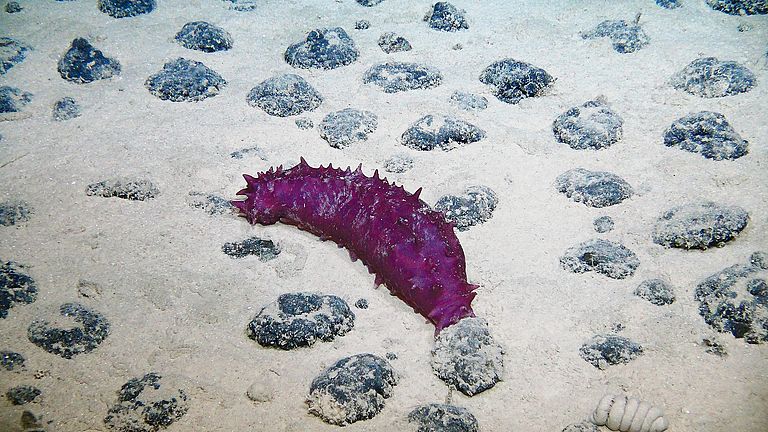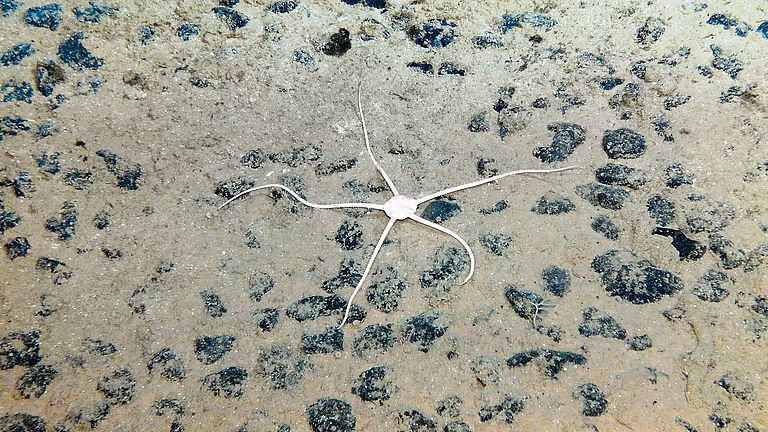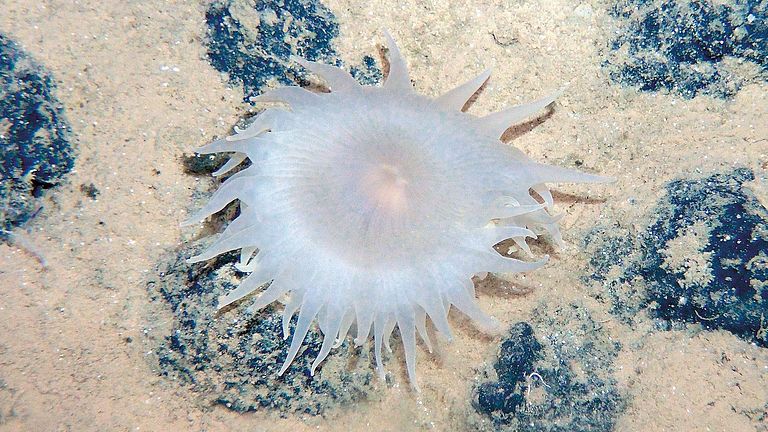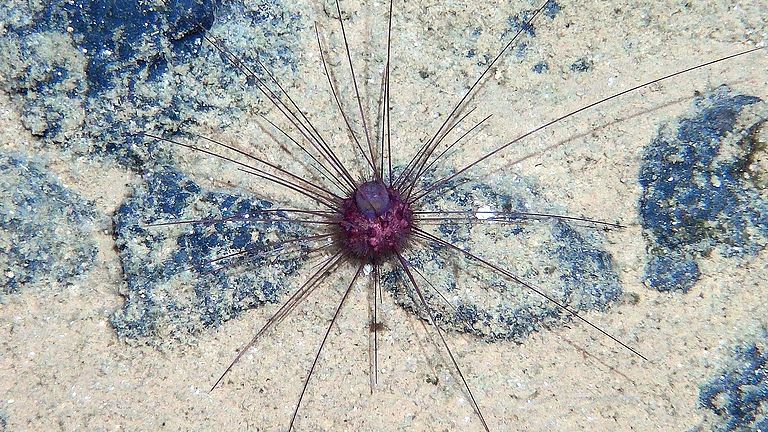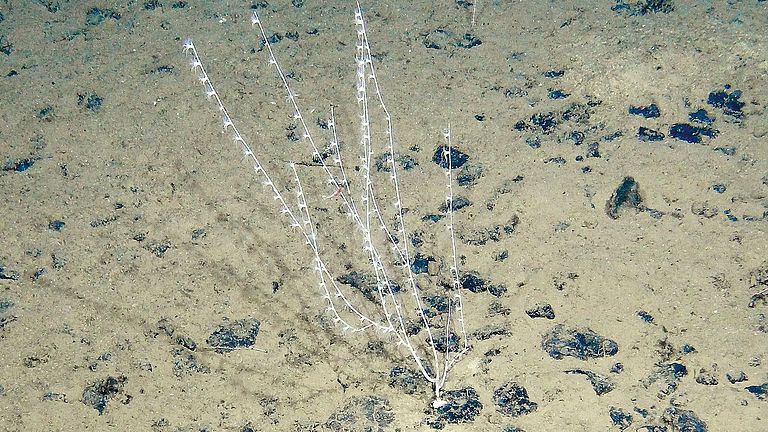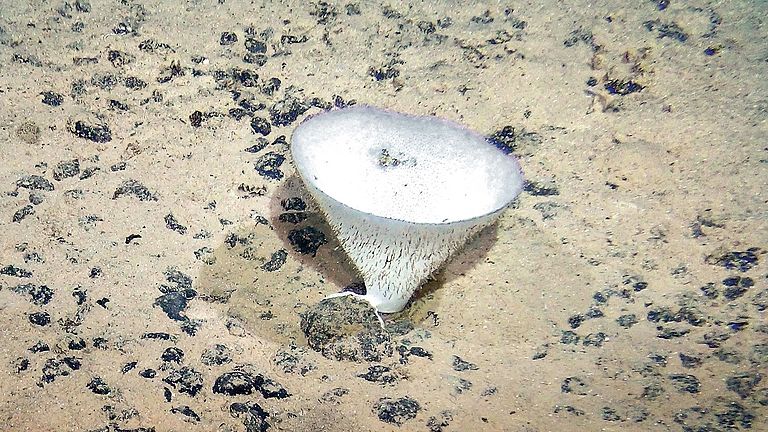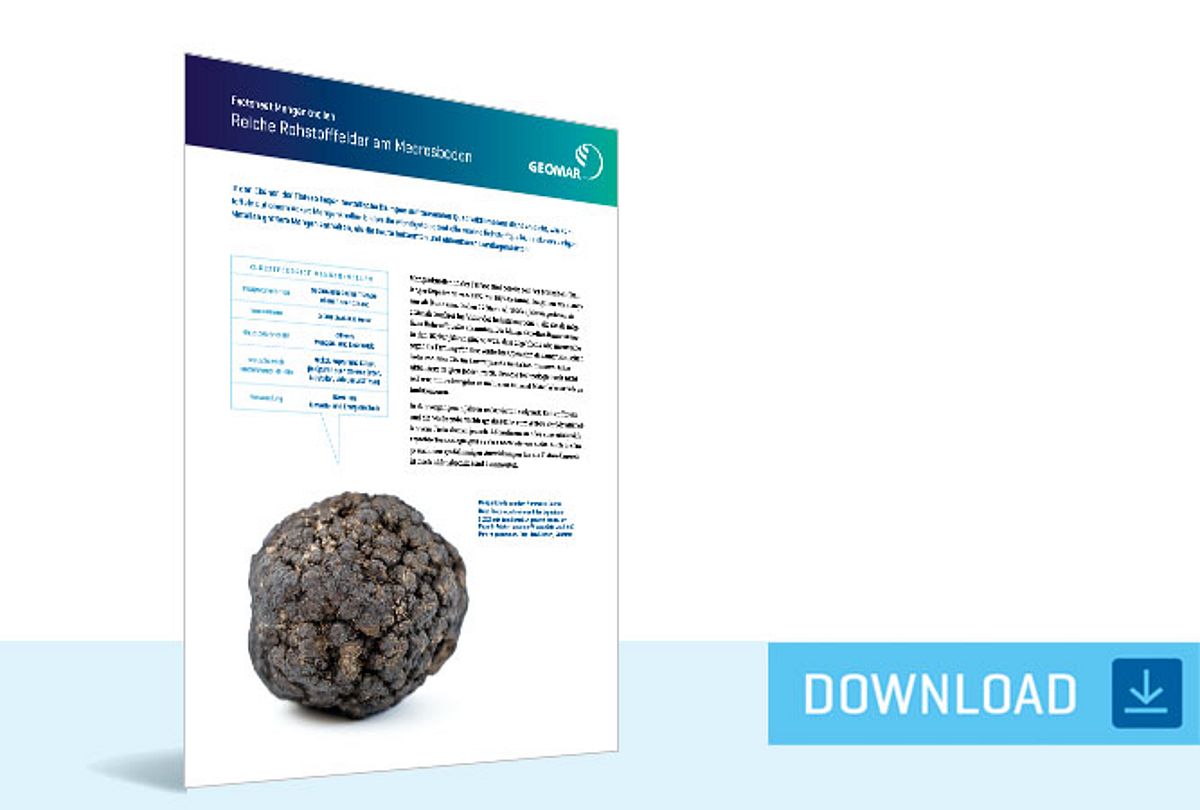GEOMAR Helmholtz Centre for Ocean Research Kiel
Communication and Media
Fon 0431 600-2807
Mail media(at)geomar.de
Manganese Nodules – Rich Mineral Fields on the Seabed
In the abyssal plains of the deep sea, metal-bearing lumps lie close together over thousands of square kilometres, like potatoes on a field: Manganese nodules are the most important potential source of raw materials in the marine realm, as they contain larger quantities of some metals than are currently known and mineable on land.
Manganese nodules in the deep sea have been known since the British Challenger expedition from 1872 to 1876. For a long time, however, they were only regarded as a curiosity. In the 1960s and 1970s, they were first targeted by the industrial nations, who recognised them as a possible source of raw materials. The manganese nodule enthusiasm in the 1970s went so far that alleged mining attempts even had to serve as camouflage for a cover-up operation of the United States Central Intelligence Agency (CIA) in the Central Pacific. Real mining tests quickly showed in fact, that the technology was not yet ready to function smoothly in several thousand metres of water.
In recent years, however, rising commodity prices and growing demand for metals have reactivated plans to mine these nodules from the deep sea floor. Still, mining licenses have not been granted and full-scale mining technology has not been successfully tested. Also, the questions about the large-scale and long-lasting harmful effects on the deep-sea environment cannot be conclusively answered at the moment.
Formation of Manganese Nodules
Manganese nodules occur worldwide on the seabed mostly at depths of 3,000 to 6,000 metres. They consist of metals that are transported into the oceans by erosion or originate from hydrothermal vents in volcanically active areas of the oceans. Their growth rate is only a few millimetres in a million years, so larger nodules with a size of 15 centimetres can be up to 15 million years old.
Manganese nodules come in many shapes and sizes. They can be round, elongated or flat. Their appearance is determined by the shape of the core, the surrounding sediment and their type of growth. Manganese nodules grow when metal ions either dissolved in seawater (hydrogenetic growth) or from the sediment pore-water (diagenetic growth) are deposited onto a nucleus. This nucleus may consist of rock fragments, shell remains, or shark teeth. Over time, concentric layers form around the core.
Usually nodules grow both dia- and hydrogenetically, whereby the respective proportions differ in different regions. It is fascinating that manganese nodules grow extremely slowly. With every million years, their thickness increases only millimetre by millimetre. Hydrogenetic nodules grow up to 10 millimetres per million years, diagenetic nodules between 10 and 100 millimetres per million years. As a result, manganese nodules could only form where environmental conditions remained fairly constant over such long periods of time.
Biodiversity at Manganese Nodule Fields
In the 19th century it was still believed that life was impossible below a depth of a thousand metres. But even today, the deep sea surprises scientists. The perception that the large deep-sea plains in the central Pacific are uniformly flat and only sparsely populated has persisted until the present day. Another mistake, as researchers from the European MiningImpact project found out: The ecological diversity down there is enormous, especially where many manganese nodules cover the seabed.


